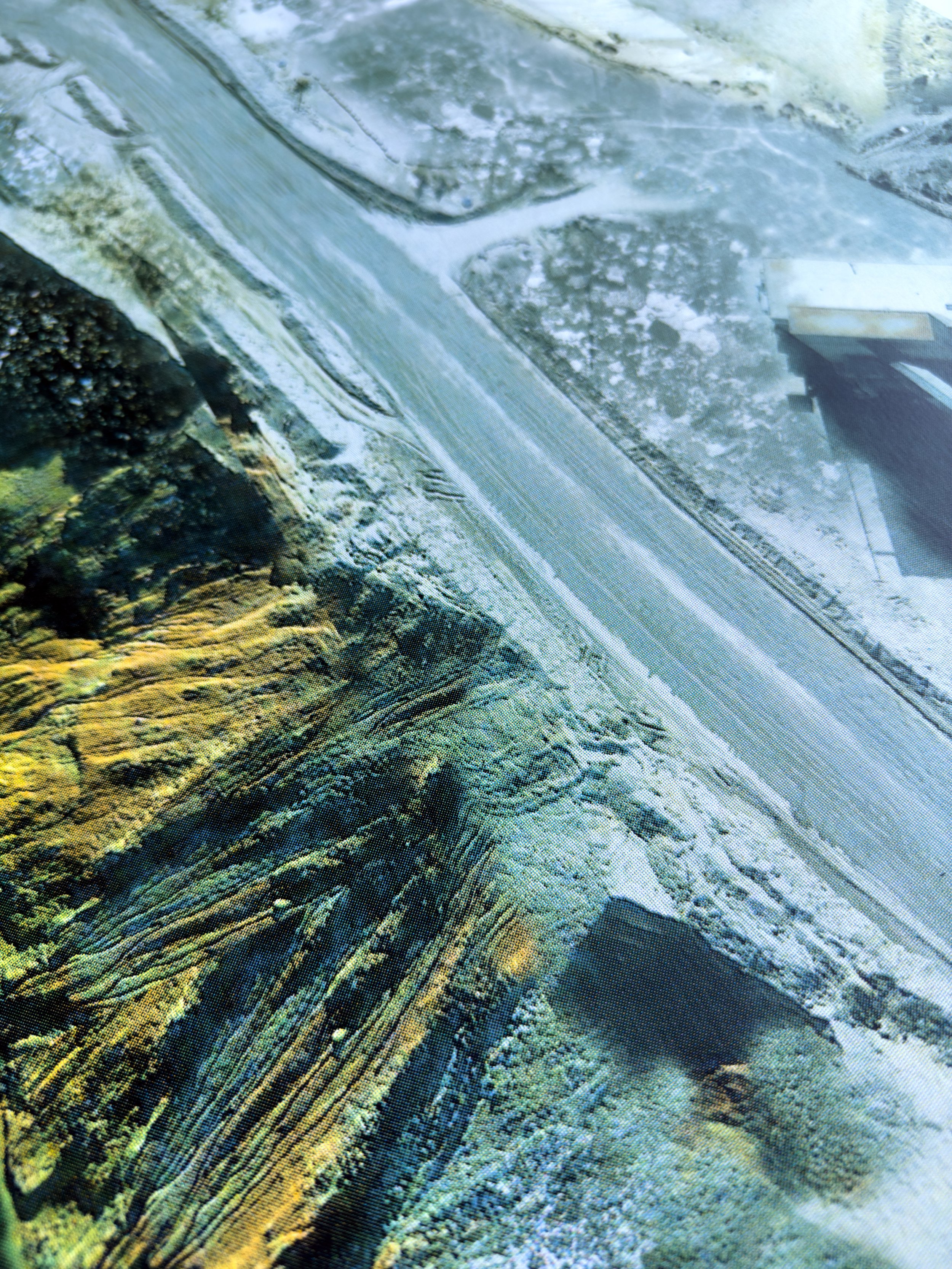(Re)Presenting extraction: deep time and deep futures

The aftermath of geological interference, CMYK screen print across eight panels, 204 by 208 cm, 2023, as displayed in the Royal College of Art Graduate Show 2023 at the Truman Brewery, London


This mined landscape is a visible marker of human interference with geology. Fragments of deep time bleed through artificial formations, glowing amongst arid scenery consumed by eroding equipment and buildings in a state of ruin.
Spectacular photomicrographs from independent research archives make visible the geological compositions of the landscape at this open pit mine. This work reconstructs the formation of the land, entangling two opposing visual expanses: the micro and the satellite viewpoint. The original image of the Berkeley Pit in Montana is reworked beyond recognition, distorting the proximity of mining infrastructure, the formations of the pit, and the deep, swirling body of water engulfing the disused site.
The printed image spans over eight panels, each one forming in layers overtime as I pushed ink through the halftone dot data suspended in the mesh of a silkscreen. I am drawn to the physicality of building imagery, working with equipment to transfer my immaterial digital creations into lively, glossy textures atop a smooth, delicate surface. The curation of this artwork obscured the landscape, mirroring the structure of an ore body or mineral.
By engaging with archived imagery in this way, I explore how experimental image editing, colour manipulation, screen print, and curation can engage with speculative fiction to highlight the activity of non-human entities within abandoned sites of human intervention.
Reimagining pre-existing matter through creative processes is an application of world building. Erasing, superimposing, and layering in printmaking reframes the original archived data, by expanding it through abstracted narratives, inviting contemplation and questioning.

